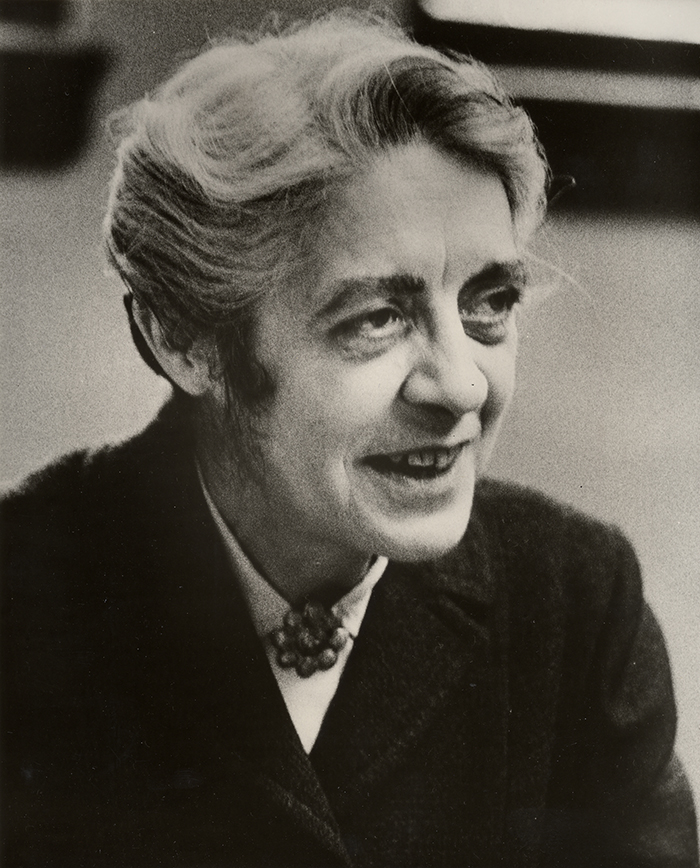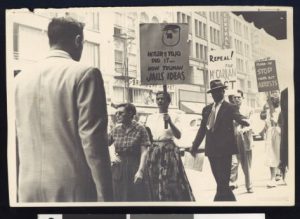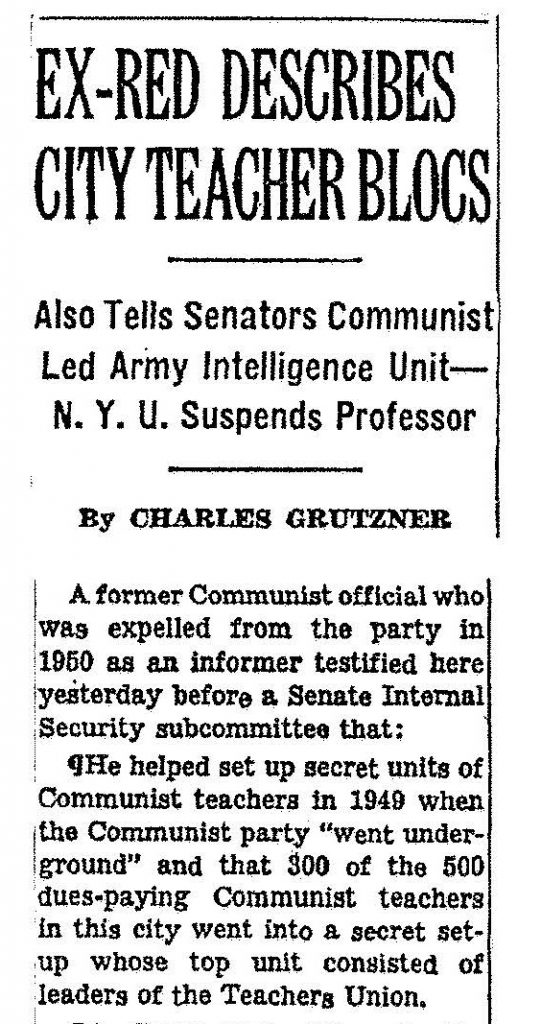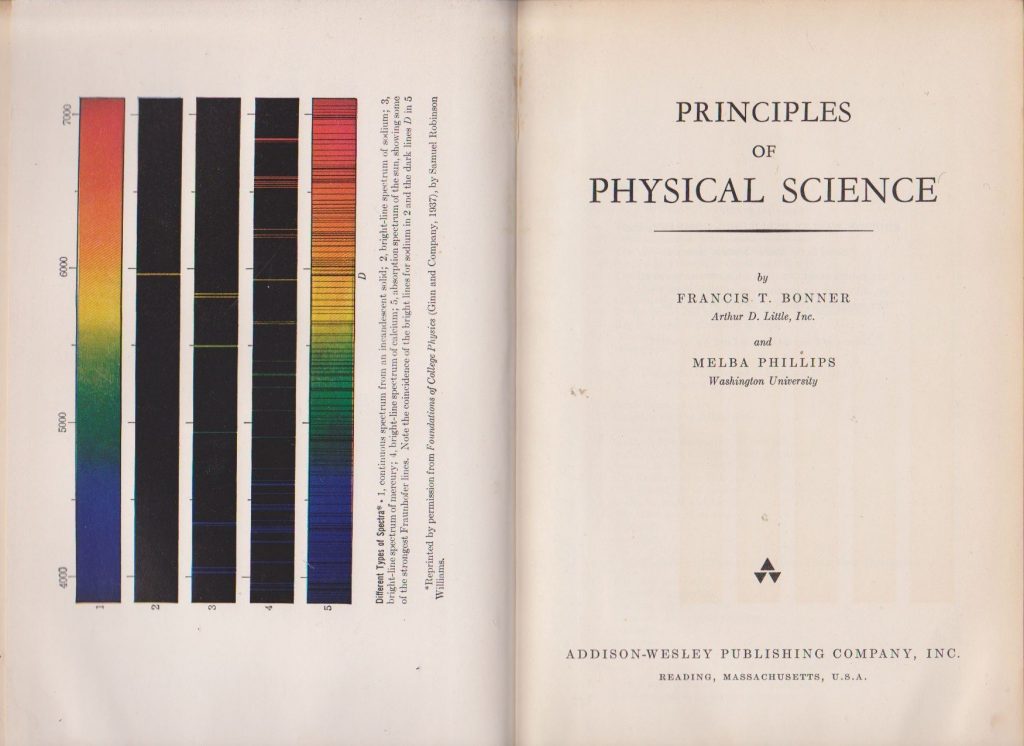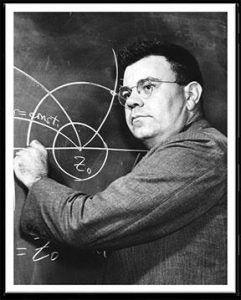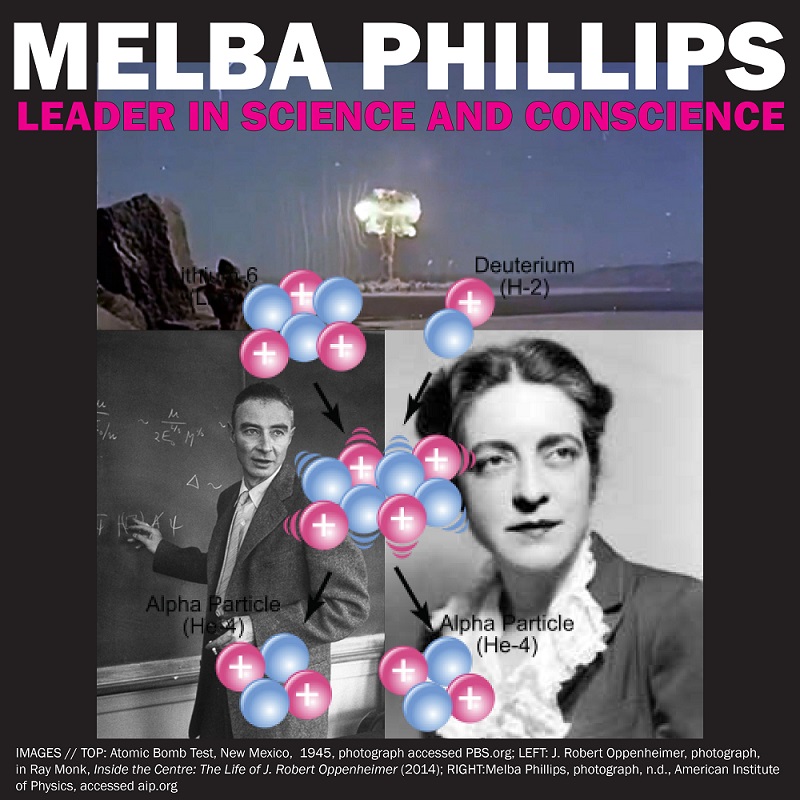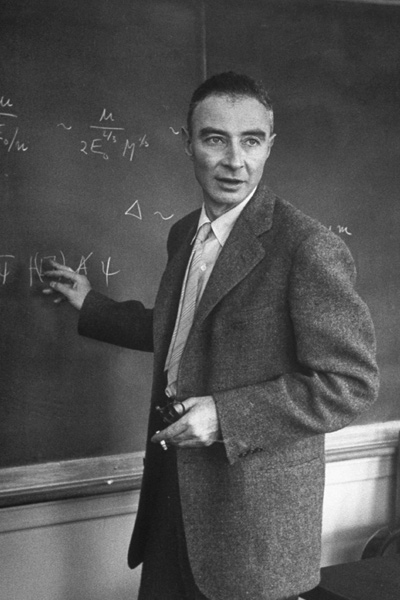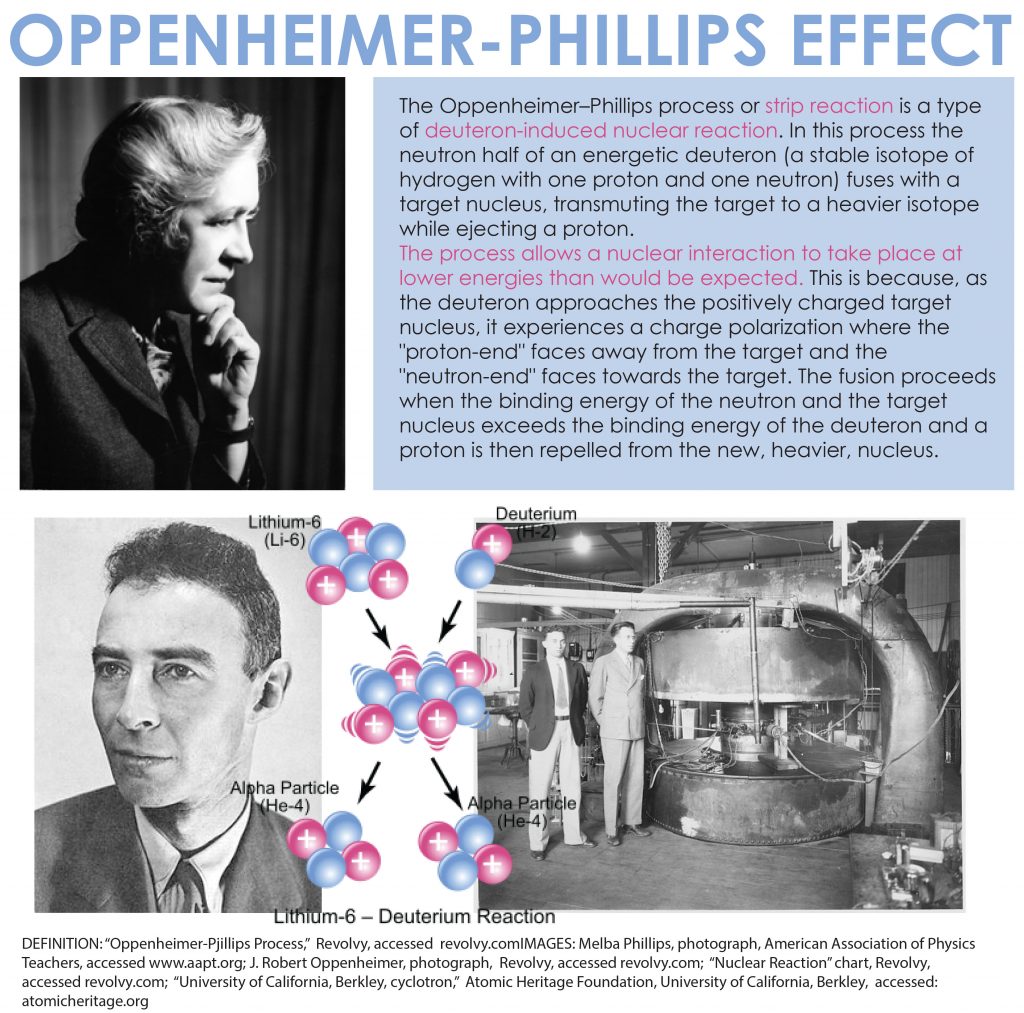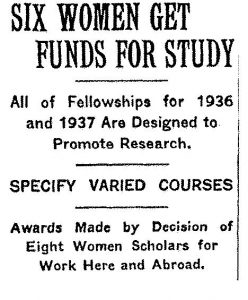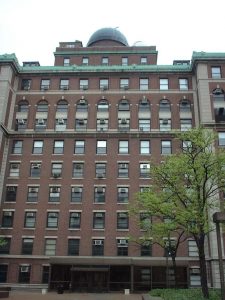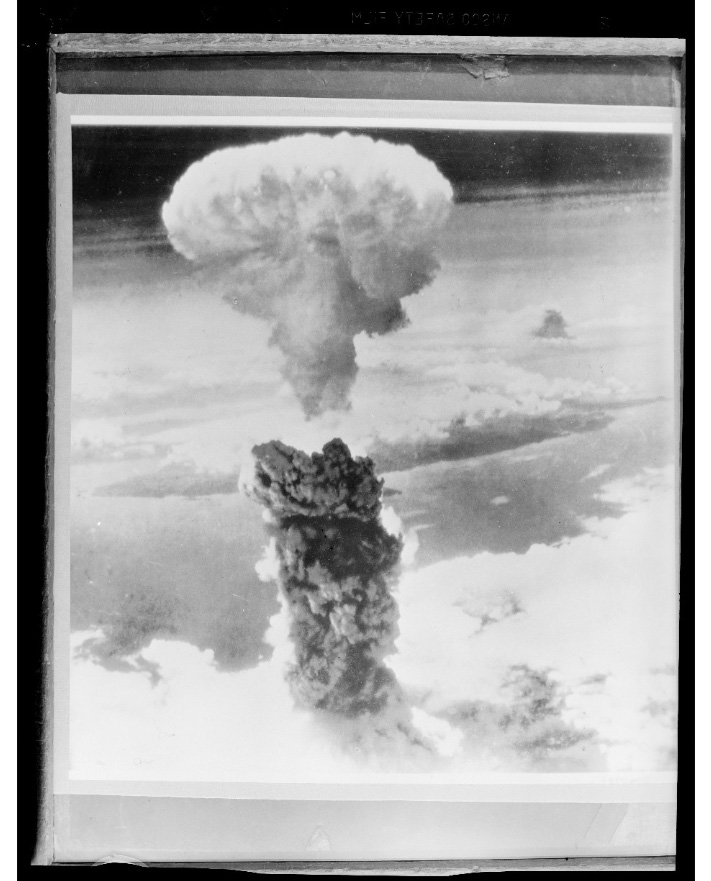
This article was originally published on the Hoosier State Chronicles blog on August 26, 2016.
The known universe is big; insanely big! At a staggering age of 13.8 billion years, our observable universe has a diameter of 92 billion light-years. Over the last century, astronomers, physicists, and mathematicians have helped us understand a more precise measurement of the size of the universe and how it has changed over time. The prevailing theory is the “Big Bang,” which, “At its simplest, [it] talks about the universe as we know it starting with a small singularity, then inflating over the next 13.8 billion years to the cosmos that we know today.” A key component of Big Bang cosmology, “Expansion Theory,” stipulates that the universe is expanding, rather than a static state, which accounts for the changing distances of stars and galaxies. So, how did we come to this conclusion?

Part of our understanding of the expanding universe has benefited, in no small part, to an Indiana farmer’s son named Vesto Slipher. Slipher developed spectrographic methods that allowed researchers to see a Doppler effect in the distances of what were then called “spiral nebula,” what we today call galaxies. Simply put, by measuring the longer wavelength red shift (objects moving away) and shorter wavelength blue shift (objects moving closer), Slipher demonstrated that the universe was not static. In fact, it was expanding and often pushing objects towards each other. Slipher’s name doesn’t get regularly name-checked as one of the greatest scientists of all-time, but his contributions helped to establish our current view of the cosmos.

Vesto Melvin Slipher was born on November 11, 1875 on the family farm in Mulberry, Indiana. As biographer William Graves Hoyt noted, Slipher’s early life on the farm “helped him develop the strong, vigorous constitution that later stood him in good stead for the more strenuous aspects of observational astronomy.” Slipher received a B.A. (1901), M.A. (1903), and Ph.D (1909) in Astronomy from Indiana University. His Ph.D. dissertation paper, The Spectrum of Mars, which tentatively identified atmospheric characteristics (namely, water vapor) on the red planet.


Slipher’s professional career in science began in August of 1901, when he moved to Flagstaff, Arizona to fill a vacancy at the Lowell Observatory. Founded by the idiosyncratic Dr. Percival Lowell, Lowell Observatory became one of the foremost institutions of astronomy during the early 20th century. As the Coconino Sun put it, the observatory, “is known and recognized all over world for its discoveries and correct calculations.”


Lowell’s chief pursuit with the observatory was to prove that there were inhabitants on Mars, and hired young Slipher to help him. As early as 1908, Slipher found evidence through his spectroscopic techniques that Lowell may be on to something. The Washington Herald reported that V. M. Slipher (newspaper articles almost always identified him in print with just his initials) and his brother, Earl C. Slipher, “discovered evidences of the presence of water in the atmosphere of Mars. . . .” Sometime later, on May 20, 1909, the Hopkinsville Kentuckian noted that Slipher’s observations, “favor the view that the whitecaps about Mars poles are composed of snow rather than of hoarfrost,” and that “prevalent conditions of Mars . . .are those of a mild but desert climate, such as Professor Percival Lowell has asserted exists there.”

Lowell’s interest in Mars, emboldened by Slipher’s results, intensified. In 1912, Slipher helped install a 13,000 feet high telescope in the San Francisco Mountains so as to refine his measurements. Slipher’s efforts culminated in a 1914 announcement of further confirmation to his Water Vapor hypothesis. The Washington, D.C. Evening Star wrote that, “while the amount of water is difficult to determine, the estimates placed it at about one-third that of the atmosphere of the earth.” While Slipher and Lowell never found Martians on the red planet, their findings established atmospheric models that are still corroborated by scientists to this day.

With his research on Mars, Slipher was only getting started. His real passion was observing the position and velocities of “spiral nebula,” and he used his spare time away from his Mars projects to advance his research. His early successes convinced Dr. Lowell to give him time devoted to this research. It came with spectacular results. In 1912, Slipher began recording spectrographic results of the Andromeda Nebula (now known as the Andromeda Galaxy) and found that they were blue-shifting, which indicated that the nebula was “not within our galaxy.” “Hence we may conclude,” Slipher observed in his published findings, “that the Andromeda Nebula is approaching the solar system with a velocity of about 300 kilometers per second.” Within the next couple of years, Slipher also discovered that the Andromeda Nebula was also rotating as it traveled, and published these results in a subsequent article. From there, the results went to the press; the Daily East Oregonian published the findings in its November 15, 1915 edition. The Caldwell Watchmen in Columbia, Louisiana also reported that the Nebula was traveling at an unprecedented speed of “186 miles a second.” Similar articles were published in the Ashland, Oregon Tidings and the Albuquerque Evening Herald.

Slipher eventually observed the speeds of 15 nebulae, shared his findings at the 1914 American Astronomical Society meeting, and “received a standing ovation.” His results were then published by the society in 1915, demonstrating that the average velocity of these nebulae at 400 kilometers a second. A few years later, in 1921, Slipher found a record-breaking nebula called Dreyer’s Nebula (known today as IC 447) that was traveling away from our galaxy at 2,000 kilometers a second! With nebulae moving at varying velocities and in varying directions, Slipher’s research had started a conversation about the need to reevaluate the static theory of the universe. Why were these nebula acting like this?


In comes Edwin Hubble, the lawyer-turned-astronomer with the dashing looks of a movie star who pushed our understanding of the universe even further (Like Slipher, Hubble also had an Indiana connection as he taught and coached basketball at New Albany High School during the 1913-14 academic year) . As physicist Lawrence Krauss noted, Hubble used Slipher’s data on spiral nebula, combined with new observations he obtained with colleague Milton Humason, to postulate a new cosmological law. This new theorem, called “Hubble’s Law,” argued that there was a direct “relationship between recessional velocity and galaxy distance.” In other words, the farther away a galaxy is, the faster it is moving. These results flew in the face of both Isaac Newton and Albert Einstein’s notions of the universe, which argued for a static universe. If Hubble was right, the universe was actually expanding.
To test this idea, Hubble began a new series of spectrographic experiments in the 1930s. The Muncie Post-Democrat reported on one of these experiments on November 25, 1938:
The answer [to the expansion theory], they said, may be found when the new 200-inch reflector, cast in Corning, N. Y., glassworks, is completed. If the universe is expanding, the giant reflector being built on Mt. Palomar, in California, may indicate the type of expansion. The new mirror will collect four times as much light as the 100-inch Hooker reflector now in use at Mt. Wilson.

These further experiments reaffirmed Hubble’s earlier conclusions and the expansionary model of the universe became the standard-model. The evidence was so overwhelming that Einstein changed his mind and accepted the expansionary theory. Like with his work on Mars, Slipher’s early observations helped to uncover a field-altering discovery, and as biographer William Hoyt concluded, his research “enabled astronomers to gauge the approximate age and dimensions of the known universe.”

Even after his momentous research on spiral nebula, Slipher continued to be involved in key discoveries. For example, Slipher assisted in the discovery of the planet (now dwarf planet) Pluto! A January 2, 1920 article in the Coconino Sun recalled that, “Dr. Slipher said he believes it is true that there is an undiscovered planet. This belief is due to peculiar actions of Uranus, who gets kind of wobbly sometimes in her course around the sun.” To confirm these claims, Slipher brought young scientist Clyde Tombaugh onto the project in 1928. After many attempts of photographing the unknown body, and Slipher even missing it in some telescopic photographs, Tombaugh finally discovered Pluto on February 18, 1930. The New York Times later reported the discovery on April 16, 1930. “Denial to the contrary,” the Times wrote, “Dr. V. M. Slipher, director of the Lowell Observatory [here], believes evidence indicates that the recently discovered “Planet X” is the long-sought trans-Neptunian planet, and is not a comet.” While Tombaugh rightfully gets the credit for the discovery, Slipher’s hard work in assisting the young scientist should count as one of his accomplishments.


Slipher retired from the Lowell Observatory in 1952 and spent the remaining years of his life involved in minor astronomical work and community affairs before he passed away in 1969, at the age of 94. While not a household name, Slipher’s achievements in astronomy are legendary, from his discovery of the atmospheric conditions of Mars and assisting with the discovery of Pluto to his ground-breaking research on spiral nebulae that led to our understanding of the expanding universe. In short, he helped science, and in turn humanity, further uncover the mysteries of the cosmos. Pretty good for a farm boy from Mulberry, Indiana.

